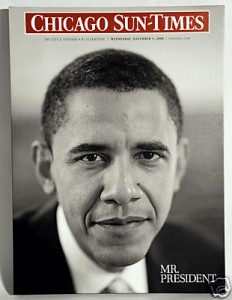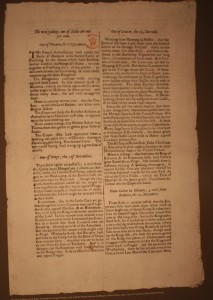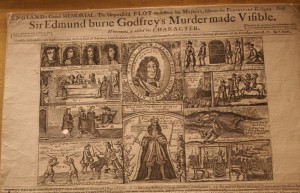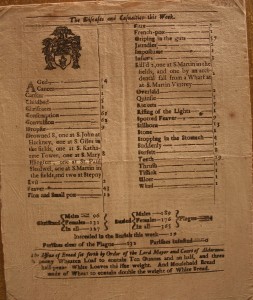 Helium.com is a web site devoted to citizen journalism. We had a chance to speak with its VP of development, Peter Newton, on Monday. Newton is a long-time Boston Globe executive who came to Helium about two years ago to help invent a new approach to journalism.
Helium.com is a web site devoted to citizen journalism. We had a chance to speak with its VP of development, Peter Newton, on Monday. Newton is a long-time Boston Globe executive who came to Helium about two years ago to help invent a new approach to journalism.
The site has about 5,000 regular contributors, who upload all manner of stories relating to their interests and activities. Helium isn’t a news site; rather, it takes the type of material that people would have posted on blogs for nothing and offers it to the public and to publishing partners on a revenue-share basis. Newton said some citizens are earning thousands of dollars per year for their contributions.
Helium has useful advice on everything from Socrates to roasting turkey. Contributed stories are evaluated by members and voted up or down the popularity stack. Contributors share in advertising revenue as well as the modest license fees the company generates from distributing its content to publishing partners. Most of those partners are small right now, but Newton says some big deals are imminent. In the Marketplace section, a few publications solicit articles by topic, paying between $48 and $120 per submission. There is also a list of citizen journalism awards available to aspiring writers.
One of Helium’s goals is to become a source of freelance content for publishers who want a low-cost alternative to standard freelance rates. The site is founded on the assumption that expertise doesn’t have to cost $1/word and that knowledgeable people can now find an outlet for their expression. Helium isn’t profitable yet but hopes to get there within about a year. With $17 million in venture capital, it’s off to a good start.
Small is Beautiful…Or At Least Cheap
The New York Times reports upon the rise of small, focused investigative journalism operations that are succeeding where traditional newspapers are cratering. Operating at the will of charitable organizations, in many cases, they pay their journalists anywhere from $30,000-$50,000 per year and provide highly targeted coverage of specific topics and regions. Most of these organizations are small and have low traffic counts, but the big ones, like MinnPost in the Twin Cities and the St. Louis Beacon, can top 200,000 visitors per month. While they provide only a fraction of the coverage of the mainstream media they displace, they are increasingly popular alternatives for journalists whose jobs have been swallowed up by the implosion of local dailies.
Do They Still Not Get It?
Baltimore Sun copy desk director John E. McIntyre relates the experiences of two colleagues who are making a living trying to give new-media advice to their ink-stained brethren. Their frustration is summed up in this anecdote from one of them: Too many journalists think the reader’s pleasure is irrelevant, that the reader picks up the newspaper either to be instructed or to sit in awe of the literary talent being presented in it. In short, too many journalists are too full of themselves to succeed in the 21st century, when a newspaper needs to focus on what its readers want, since the readers’ choices of what to do with their time seem limitless. That is the challenge for young journalists of the 21st century, who I hope will save us all.” McIntyre concludes that young people are not hostile to newspapers as much as they are disdainful of being bored. The idea that readers will suffer through paragraphs of tedious introduction in order to get to the meat of the story is at the heart of the disconnect between newspapers and their audiences. “We have to master the new technologies, both to acquire useful information and to convey it in the form in which readers prefer to receive it,” he says.
Miscellany
The Virginian-Pilot will cut 125 jobs, or about 10% of its workforce. Tactics include shutting down a free daily newspaper geared to Generation Y readers, reducing the size of the newspaper by about 40 pages a week and eliminating the business section. The Pilot provides an unusually frank account on its website, quoting editor Dennis Finley as saying that those laid off include some of his most senior managers. “One of the goals was to keep as many reporters on the street as possible,” Finley says. Particularly disappointing is the closure of Link, a free daily newspaper targeting the 18-to 34-year-old demographic group. The Pilot‘s average circulation has been falling, but less than the national average for newspapers. A price increase is also in the cards.
Here’s a welcome breather for the newspaper industry: newsprint prices have stabilized. The companies that sell newsprint are quietly saying that they have no plans to raise rates next year. However, that doesn’t compensate for the likely increases in the price of gasoline. While gas has gotten cheaper lately, many experts believe that $4/gallon gasoline is a likelihood for next summer, which will still significantly affect newspapers that distribute by truck.
The Chulchavox blog relates two items we missed:
- The Denver alternative weekly Westword says that staff members of the Longmont, Colo. Times-Call newspaper have been invited to the publisher’s holiday party – as parking valets. Staffers will reportedly earn what they get for their day jobs, only they’ll be parking the cars of rich people in attendance.
- The Newark Star-Ledger has reassigned a reporter and a deputy photo edit to the mailroom in order to keep their jobs.
The blogger also quotes from Martin Legeveld, of News After Newspapers, commenting upon the follow-up land from the American Press Institute’s CEO conference held last week. Participants agreed to reconvene in six months to explore additional collaboration ideas. “What are they thinking?” Langeveld says. “What will be left six months from now?”
The McClatchy Company reported that consolidated revenues in October decreased 17.8% and advertising revenues declined 20.4% over the previous year. The bright spot was a 12.4% gain in online advertising revenues.
Six Apart is offering laid-off journalists free blog accounts worth $150 per year. More than 300 applications rolled in during the first eight days. Of course, you can also get free blog accounts at Blogger.com and WordPress.com, not to mention several other places.
The Maine-based Lakes Region Weekly has cut six positions through a combination of layoffs and the elimination of unfilled positions.
And Finally…
 Out-Of-Town News, the Harvard Square kiosk that has served newspapers and magazines from around the world to an eager audience of students and erudite residents of Cambridge, Mass., will go out of business at the end of this month. The city Council of Cambridge, Mass. has voted to extend the lease in an effort to keep the business in Harvard Square, but the prospects look grim. The newsstand has been in operation since 1945, but business has been challenging for several years.
Out-Of-Town News, the Harvard Square kiosk that has served newspapers and magazines from around the world to an eager audience of students and erudite residents of Cambridge, Mass., will go out of business at the end of this month. The city Council of Cambridge, Mass. has voted to extend the lease in an effort to keep the business in Harvard Square, but the prospects look grim. The newsstand has been in operation since 1945, but business has been challenging for several years.














